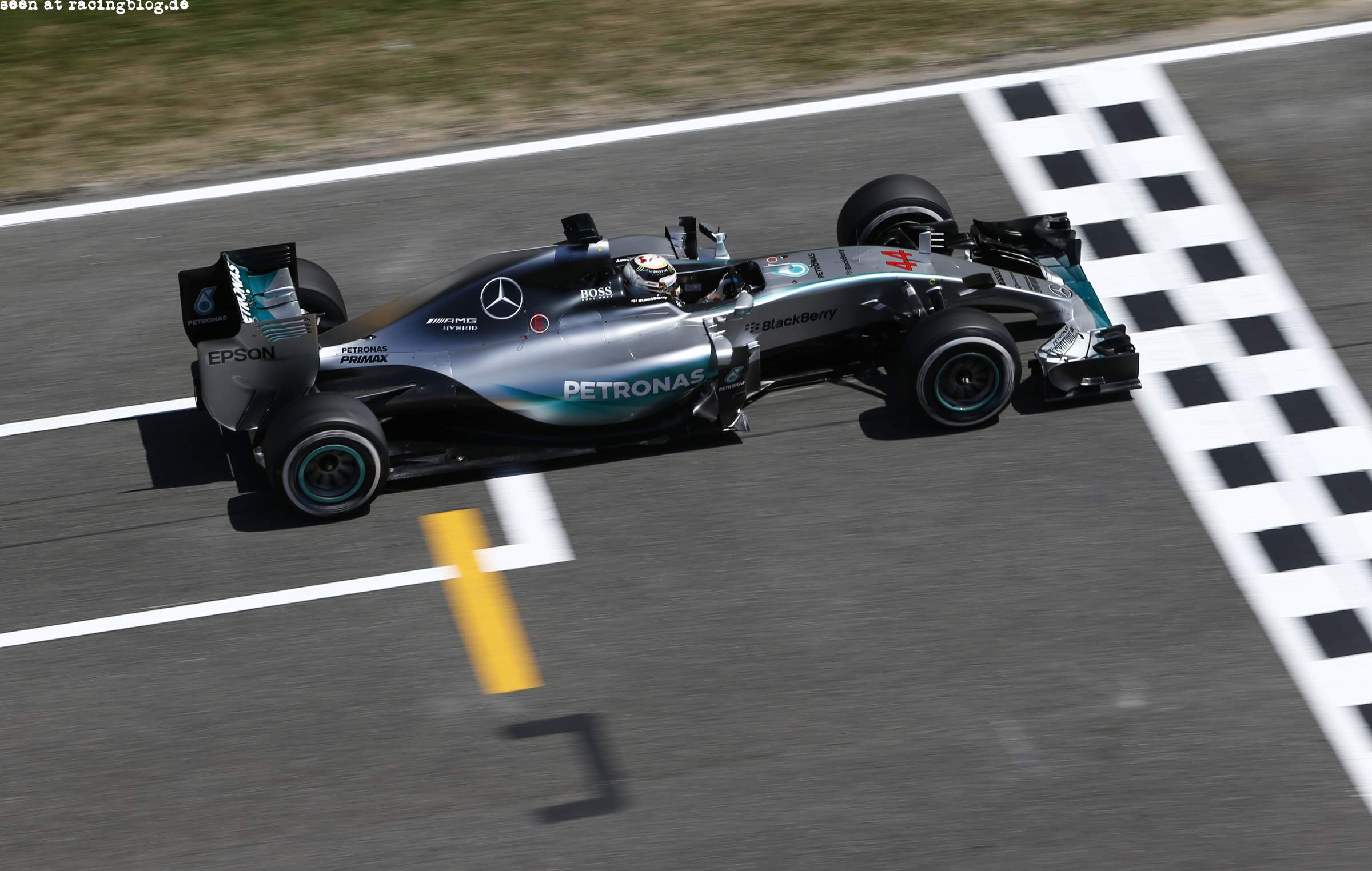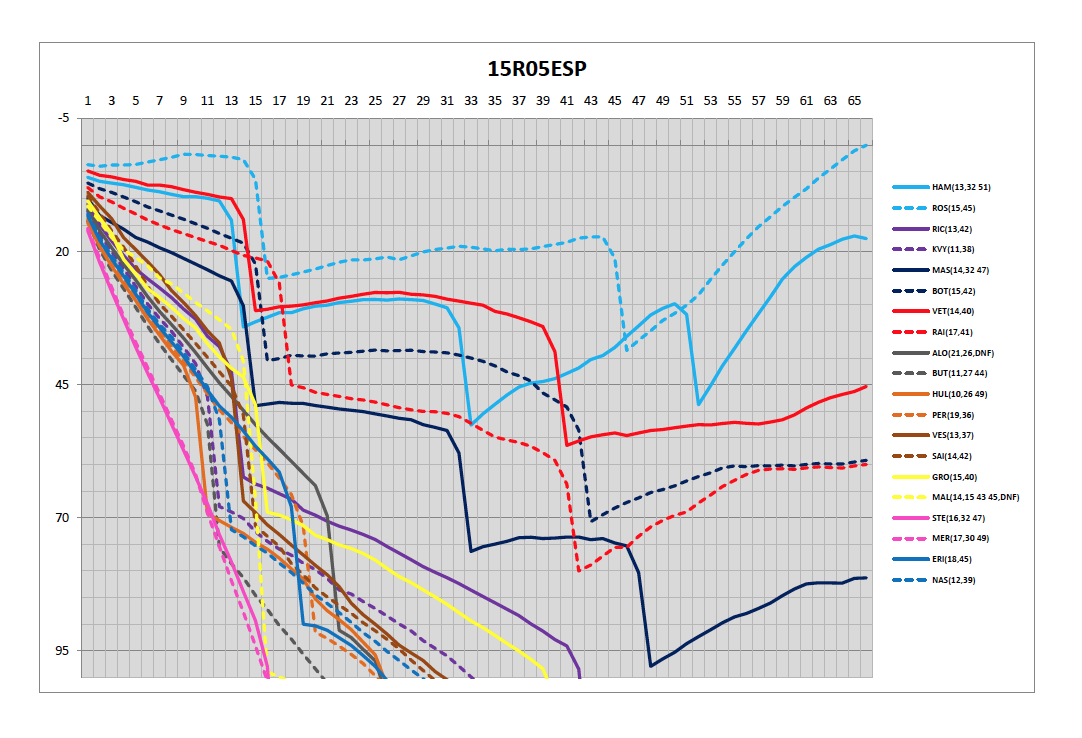While Nico Rosberg’s win in Spain on Sunday was as comfortable as you are likely to see in Formula 1, the battles for the other podiums slots and for fourth and fifth places were tense, tactical match-ups and inevitably there are questions about whether we could have seen different outcomes with different decisions.
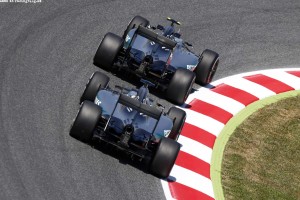 Here we will clear up exactly what was going on in the strategies of Lewis Hamilton, Sebastian Vettel, Valtteri Bottas and Kimi Raikkonen. Based on Friday running, it was clear that the difference in performance between the Pirelli medium and hard tyre was greater than last year at this event and some runners were not comfortable on the hard; both of these factors made a number of teams consider a three stop strategy. Simulations showed that a three stop plan was slightly faster but it is slightly more risky, with the extra pit stop and with the need to pass a two-stopping car on track in the closing stages. Overtaking proved very difficult on Sunday unless there was a significant difference in tyre life or car pace; three stops made it easier to overtake. Two of the top six finishers were on three stops in the end.
Here we will clear up exactly what was going on in the strategies of Lewis Hamilton, Sebastian Vettel, Valtteri Bottas and Kimi Raikkonen. Based on Friday running, it was clear that the difference in performance between the Pirelli medium and hard tyre was greater than last year at this event and some runners were not comfortable on the hard; both of these factors made a number of teams consider a three stop strategy. Simulations showed that a three stop plan was slightly faster but it is slightly more risky, with the extra pit stop and with the need to pass a two-stopping car on track in the closing stages. Overtaking proved very difficult on Sunday unless there was a significant difference in tyre life or car pace; three stops made it easier to overtake. Two of the top six finishers were on three stops in the end.
Hamilton switches strategy after early setbacks – could Ferrari have done anything to keep him behind?
As last year, the Mercedes was in a league of its own in Spain. The car had 0.8s per lap pace advantage in qualifying over Ferrari and carried that through to the race, unlike some other venues, where Ferrari has been closer on race day. This gave the strategy team a straight forward task with Rosberg’s car, but with Hamilton they had to work a bit harder after first he lost the start to Vettel, dropping to third and then an attempt at an undercut went wrong thanks to a slow pit stop, so the team was forced to convert to a three stop, to give him sufficient pace offset to pass Vettel later on.
In the end he didn’t need to because the Mercedes’ pace on the hard tyre stint was so superior to Ferrari’s, so Hamilton was able to build sufficient gap to get the job done without having to overtake. Early on, when both were apparently two-stopping, Hamilton had repeatedly said that he would not be able to overtake as he could not get close enough to the Ferrari.
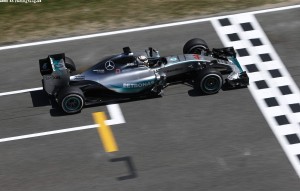 Mercedes was cunning in timing the attempted undercut on Lap 13, as it was in that ambiguous point where it could mean that they were switching to a three stop, or they were just being aggressive on a two stop. Hamilton had been told that they were switching to “Plan B”, so Ferrari was on its guard.
Mercedes was cunning in timing the attempted undercut on Lap 13, as it was in that ambiguous point where it could mean that they were switching to a three stop, or they were just being aggressive on a two stop. Hamilton had been told that they were switching to “Plan B”, so Ferrari was on its guard.
The botched pit stop kept Hamilton back in 3rd behind Vettel, who covered his stop on Lap 14 and took the gift Mercedes had given him. He then paced himself, while Ferrari tried to work out what Hamilton’s strategy would be. Both cars were on new medium tyres and not taking full advantage of the pace they could offer; Vettel was running only half a second faster than he had been going on used tyres before his stop. Raikkonen meanwhile was sitting 21 seconds behind, which meant that he was in Hamilton’s pit window and Hamilton would need to pass him quickly if he were to switch to three stops.
But Raikkonen was on the hard tyres, which Ferrari struggled with in Spain. So when Hamilton did show his hand and make a second stop onto hard tyres, he was able to pass Raikkonen whose tyres were 15 laps old, relatively easily.
Could Vettel have stopped ahead of Hamilton for the second stop and kept him behind? Not really, because he would have had to commit to a three stop by doing that and Mercedes would have responded by running Hamilton longer on his second stint –as they did with Rosberg who did a 30 lap middle stint – and then with the superior pace of the Mercedes on hard tyres at the end, Hamilton would have had track position advantage over a now three stopping Vettel and he would be faster on hard tyres. Mercedes had the pace, basically, to cover every eventuality.
One final question – if Hamilton’s first pit stop had gone well and he’d achieved the undercut, would he have been able to beat Rosberg? The answer is unlikely. By committing to the undercut on the new medium tyres at that stop, if he’d come out ahead of Vettel he would have been on the same tyres as Rosberg, eight seconds behind through the middle stint and with no chance to vary the strategy. Last year when the two Mercedes were racing, they were able to give the second car a different strategy by switching to the harder tyres at the first stop and it made for a battle at the end of the race.
Williams plays it cool and picks off a Ferrari.. again
For the second race in succession, Valtteri Bottas finished ahead of a Ferrari, managing to hold Kimi Raikkonen behind him in the closing stages, as he had done with Vettel in Bahrain.
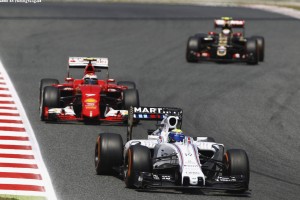 This was based on a switch of strategy for the Williams driver; the team called to him in the opening stint on the radio to say that they were going for “Plan C” – this was to switch away from a planned three stopper, to a more conventional two stopper, using two sets of medium tyres with a final stint on hards. Williams had reason to consider a three stopper because they hadn’t been too happy on the hard tyre in practice and they were concerned about tyre degradation.
This was based on a switch of strategy for the Williams driver; the team called to him in the opening stint on the radio to say that they were going for “Plan C” – this was to switch away from a planned three stopper, to a more conventional two stopper, using two sets of medium tyres with a final stint on hards. Williams had reason to consider a three stopper because they hadn’t been too happy on the hard tyre in practice and they were concerned about tyre degradation.
Why did they switch? Because they were racing against Raikkonen, who had jumped the two Toro Rosso cars at the start and they knew several key things before the first stop. First the degradation was not too bad. Secondly, the Toro Rossos dropping back in the opening phase, opened the field up and meant that there was no other threat from behind for Bottas, so they could be bold.
Plan B was probably to do what Raikkonen did and run the hards in the middle stint. Bottas, on mediums, did a longer second stint than Raikkonen on hards and when Raikkonen wanted to close on him in the final stint on new mediums, they brought the three stopping Massa into play and he was able to hold him up for a while, which meant he hit Bottas quite late on when the tyres were approaching the crossover point, so Raikkonen didn’t have a significant enough pace advantage.
Williams did the right thing, wanting to be as aggressive as possible in the fight with Ferrari and they were helped by Ferrari not putting Raikkonen on a three stopper, which might have brought him fourth place. The Finn was already on the back foot after failing to assimilate all the upgraded parts on the car, so he ran with the older package, but it was slower. This put him behind Bottas and the Toro Rossos on the grid and although he moved up to fifth at the start, Williams was able to contain him and hold the fourth place, thanks to good strategy and a great, measured drive from Bottas.
Race History Graph, courtesy Williams Martini Racing
The zero line is the lap time of an imaginary car doing the winner’s average lap speed every lap. It is intended to show the gaps between car performance. Compare the difference in pace between Rosberg and Vettel’s final stints on hard tyres. This is where most of the 45 second final gap came from. Mercedes was far superior on the hard. Note the big gap behind Bottas, showing no threat from any other car apart from Raikkonen. This gave Williams the luxury of being bold on strategy.

